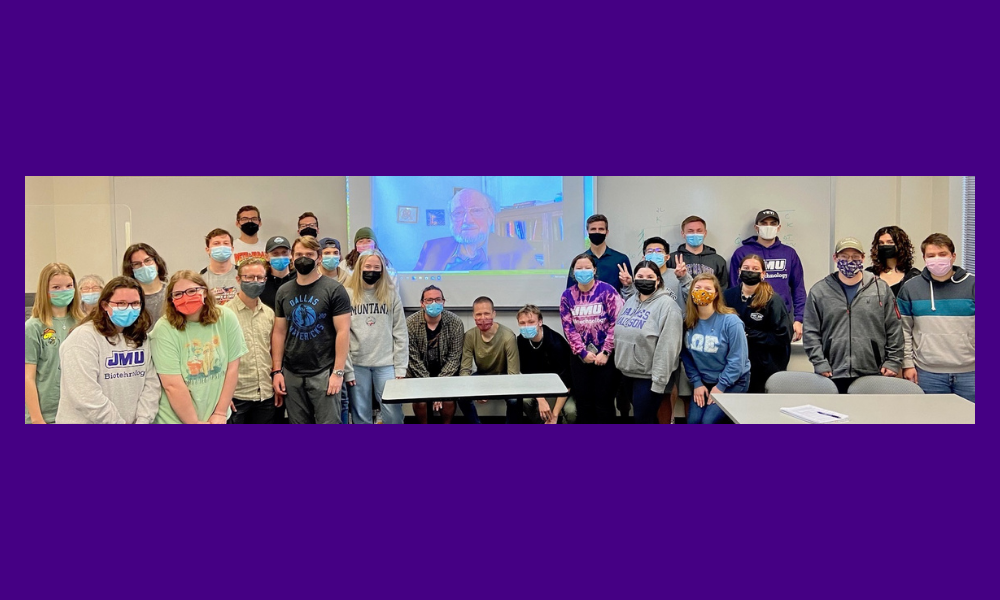Scientist who discovered Ivermectin speaks to ISAT students
News
SUMMARY: William Campbell, Noble Laureate, meets with students in JMU's Integrated Science and Technology (ISAT) Bioethics class.
By Louise Temple and Lynn Radocha
In 2015, William Campbell and his colleague Satoshi Omura shared the Nobel Prize in medicine for their work in discovering Ivermectin – a drug developed in the late 1980s. Ivermectin fights roundworm-related infections and drastically reduces occurrences of river blindness – a devasting disease in certain countries in sub-Saharan Africa, lymphatic filariasis, as well as other ailments. The drug treats approximately 25 million people annually, preventing new cases of river blindness. It also prevents roundworms in billions of livestock and pets around the world.
Louise Temple, ISAT professor and instructor of the bioethics class, worked with Campbell at Drew University, where he had joined an institute for retired industry scientists, taught a course in parasitology, and worked with undergraduates on research projects.
Students learned about Campbell's childhood in Ireland and training in the U.S. that led him to his career at Merck. He discussed science, the process, teamwork, successes, and failures. He described a seven-year project aimed at a particular drug, synthesizing and testing hundreds of compounds. "We had a spectacular record of failure," notes Campbell. "Not a single one of the drugs worked. Success in science is an incremental series of small thrills when things work because you know that it's about to fail at the next step." Campbell further explained how he never thought that success was likely. Each step was a big hurdle, and he never felt a "giant eureka moment" in his career. Cambell's story resonated with ISAT students, who were studying the ethical basis for the distribution of drugs and vaccines worldwide.
Students asked how Campbell persevered through failure. "Work for the work itself, not what the work can produce. Enjoy the ride, and don't be so concerned with the destination. Doing the science is the fun part; enjoy that on the journey. Stay curious, and if you don't believe yourself to be curious, you might be looking in the wrong place," he explained.
Students were very interested in how Campbell combines science and art. "I loved seeing how his passion for parasites translated into a passion for painting, says ISAT major Keenan McNamara. Isabel Romov, a recent graduate in biotechnology, recalls Campbell saying, "You shouldn't feel the need to escape from your work, but bring it into other parts of your life that bring you joy." "I think this was really important and something I take to heart as I go to graduate school, pursuing something I love to do," adds Romov.
Campbell finished with the following advice to students. "If you find yourself at a job where you aren't challenged or busy, take that extra free time to find a job that keeps you busy and challenges you." ISAT major Jared Obemeyer enjoyed the class and found it very inspirational. "Today will definitely be a highlight of my college journey," says Obemeyer.
